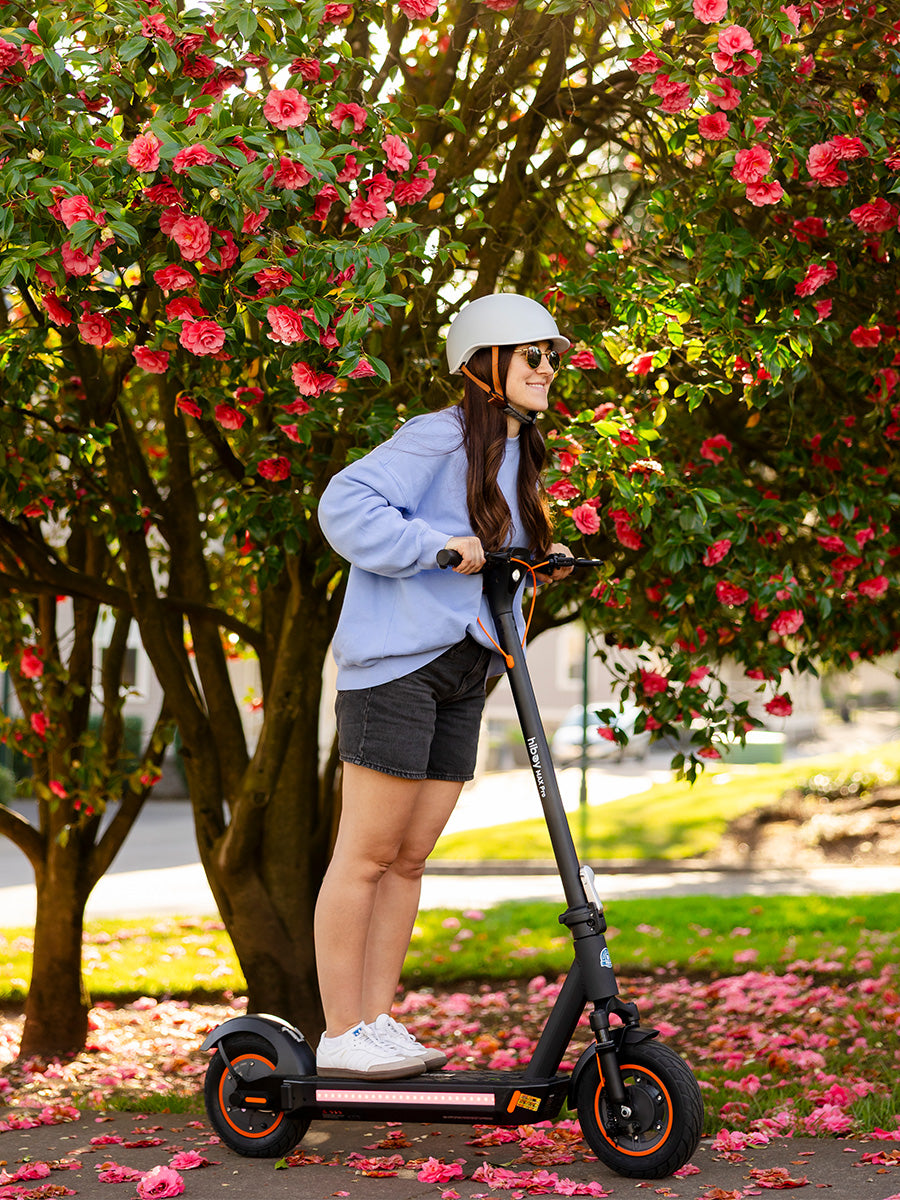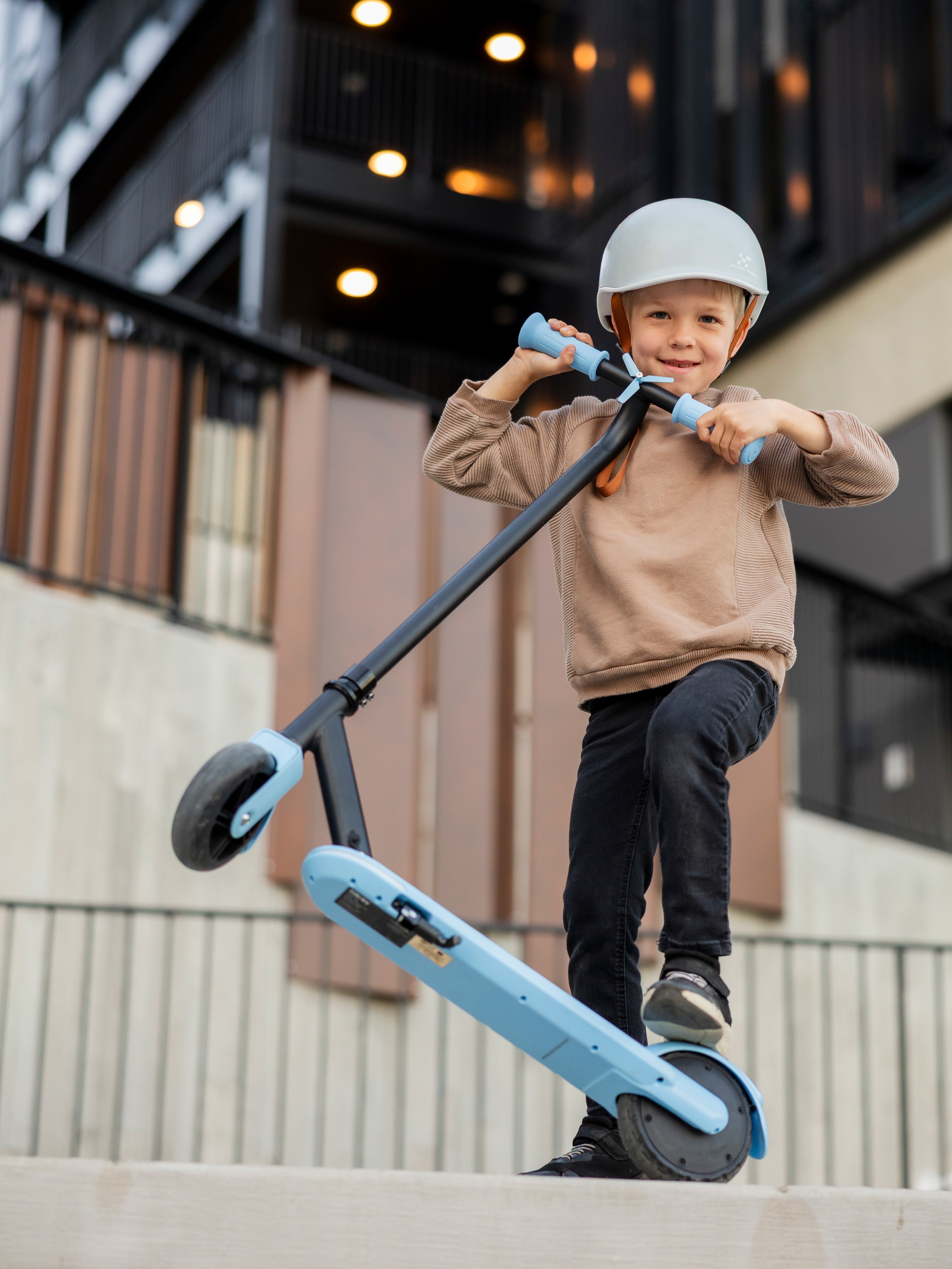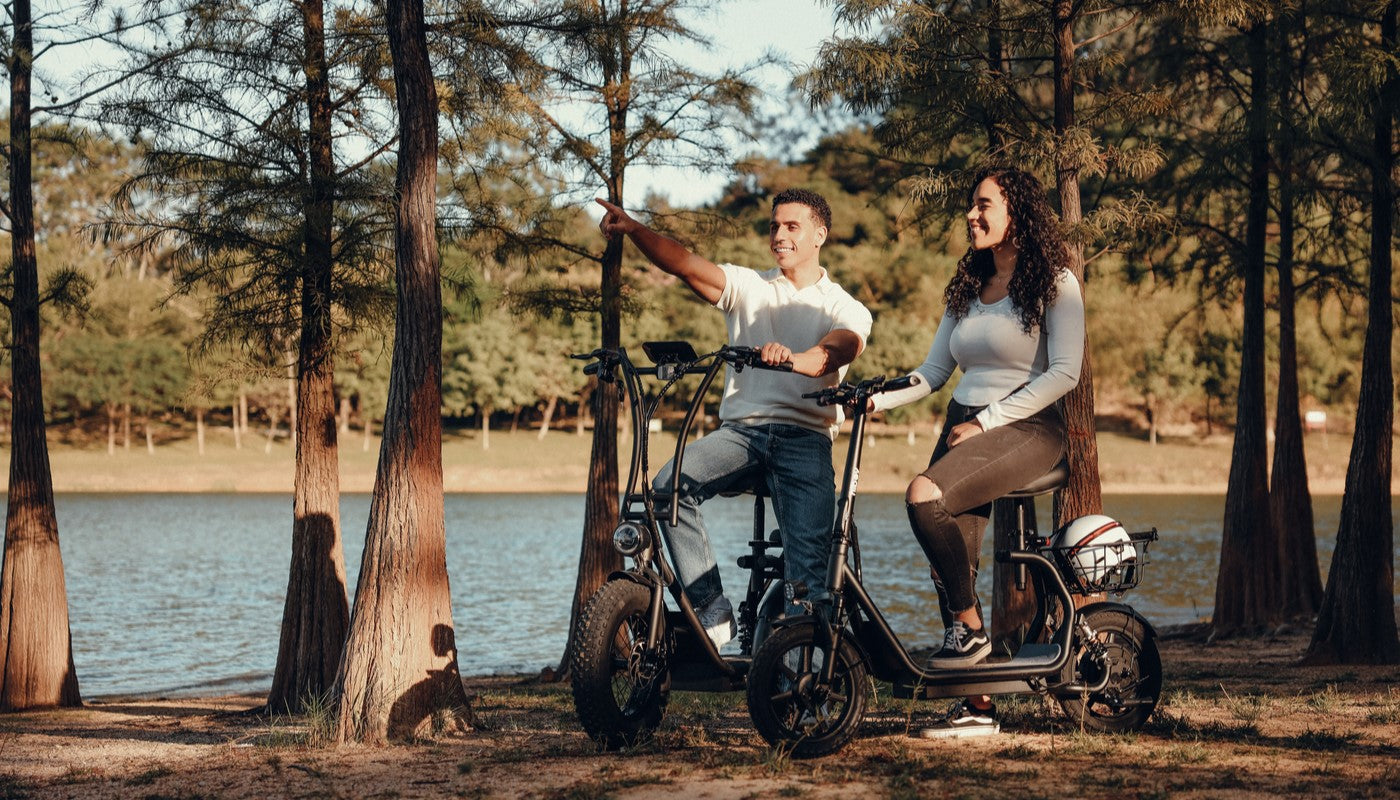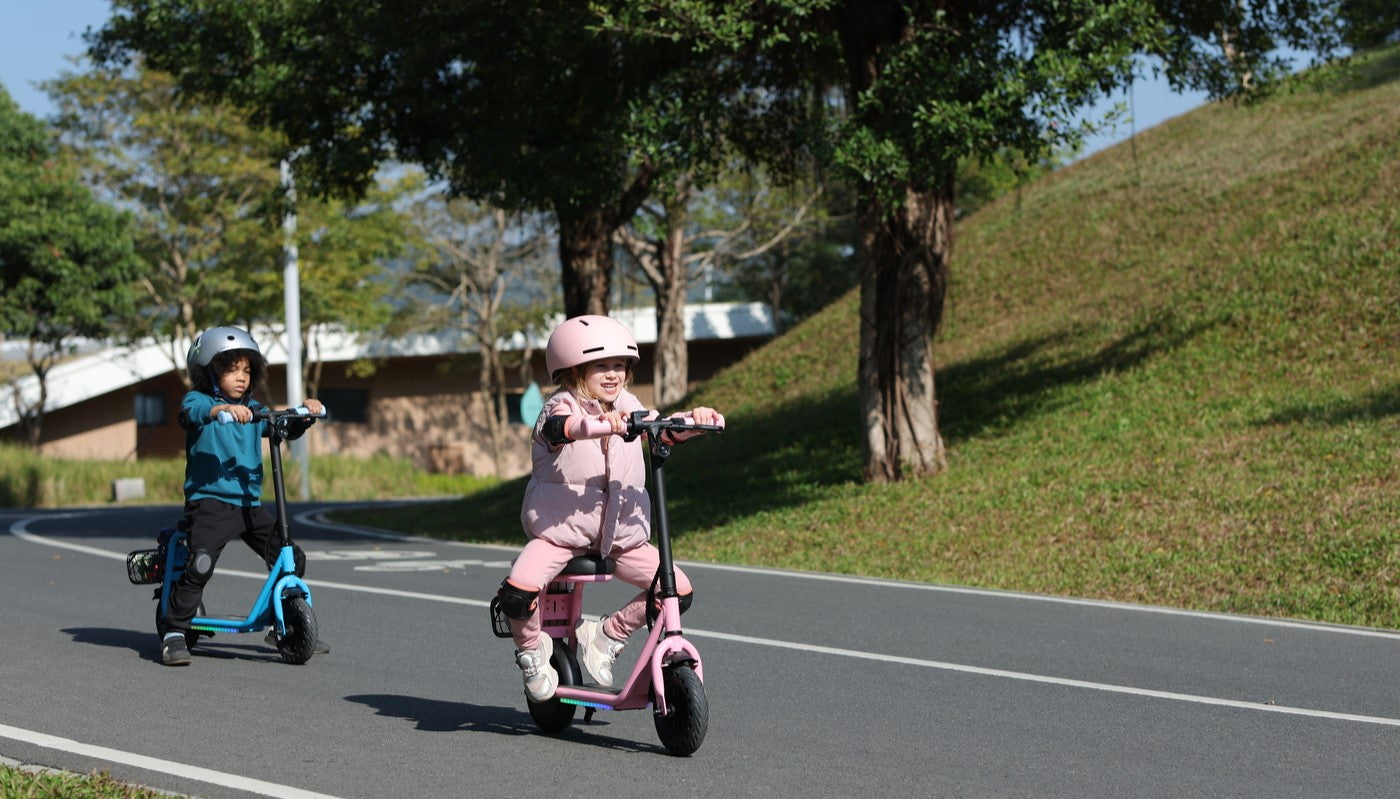Did you know you can still charge your electric scooter without its original charger? Yes, it’s possible! There are other ways to power your scooter, but you must be cautious. Safety is very important, especially when working with electricity. Also, check if the method works with your scooter. Want to learn how to charge electric scooter without charger? Keep reading to discover the safest and easiest methods.

Key Takeaways
- You can charge your electric scooter without its charger. Use tools like power banks, solar panels, or car chargers.
- Check your scooter's battery for damage before charging it. A broken battery can be unsafe.
- Match the voltage and current of the power source to the battery. This prevents overheating or harm.
- Use safe cables and connectors while charging. Bad tools can cause accidents.
- Watch the charging process carefully. Unplug the battery when it’s fully charged to stop overcharging.
- Swappable batteries are fast and easy to use. They save time and help the battery last longer.
- Public charging stations are helpful but check if they work with your scooter's battery.
- If you’re unsure about charging, read the manual or ask an expert for help.
Safety Precautions Before Charging Without a Charger
When charging your electric scooter without its charger, safety is key. Follow these steps to protect yourself and your scooter.
Checking the Battery
Look for damage or wear
Before starting, inspect your scooter’s battery closely. Are there cracks, leaks, or bulges? These can make charging dangerous. A damaged battery might overheat or catch fire. If you see anything odd, stop and ask an expert for help.
Confirm compatibility with other charging methods
Not all batteries work with every method. Check your scooter’s manual for the battery type and voltage. For example, lithium-ion batteries need careful charging compared to lead-acid ones. Using the wrong method can harm the battery or shorten its life.
Tip: Always check your battery’s details before trying a new charging method.
Knowing Voltage and Current
Match the power source to the battery
Your battery needs specific voltage and current to charge safely. Using the wrong power source can cause damage. Too much voltage can overheat the battery, while too little won’t charge it.
-
Remember these tips:
- Use a power source with the same voltage as your battery.
- Don’t use a generator or car charger unless it matches the battery’s needs.
Avoid overcharging or undercharging
Overcharging can damage the battery, and undercharging can leave you stuck. To prevent this:
- Unplug the battery when it’s fully charged.
- Keep the charge level between 10% and 90%.
- Watch the battery while it charges to spot problems early.
Note: Overcharging creates heat, which can harm the battery and lower its efficiency.
Using the Right Tools
Check cables and connectors
Using proper tools is very important. Make sure cables and connectors are in good shape. Broken wires or loose parts can cause fires or short circuits.
-
You’ll need these:
- Insulated wires
- Electrical tape
- Color-coded connectors for easy use
Avoid unsafe setups
Quick fixes might seem easy but can be risky. For example, connecting wires without insulation can cause shocks. Always use tools made for electrical work and follow your scooter manual.
Safety Reminder: Keep your area clean and free of flammable items. Wear gloves and goggles for extra safety.
Overview of Electric Scooter Batteries and Charging Systems
Knowing your electric scooter battery and how it charges is important. This is especially true if you want to try other charging methods. Let’s explain it step by step.
Types of Batteries in Electric Scooters
Electric scooters use different batteries, each with special features.
Lithium-ion batteries
Lithium-ion batteries are common in newer scooters. They are light, strong, and store lots of energy. These batteries last for 300-500 charges, making them dependable. They also charge faster than others, so you can ride sooner.
Lead-acid batteries
Lead-acid batteries are older and less effective. They are heavier and don’t last as long, about 200 charges. But they cost less, so they’re found in cheaper scooters. They need more care and take longer to charge.
Quick Fact: Lithium-ion batteries are popular for their energy storage, while lead-acid batteries are chosen for their lower price.
Here’s a simple table comparing scooter types and battery performance:
How Charging Systems Work
Charging systems do more than just connect a charger. They help keep your battery safe and working well.
How chargers control voltage and current
Chargers give the battery the right voltage and current. This stops overcharging, which can harm the battery, and undercharging, which can leave you stuck. Think of it like a traffic officer, guiding electricity safely into the battery.
Why battery care matters
Good charging habits make your battery last longer. For example, unplugging the charger when the battery is full helps avoid damage. Studies show that smart charging saves energy and keeps the battery strong.
Tip: Always use a charger made for your scooter’s battery to avoid problems.
Using Other Charging Methods
If you want to try other ways to charge, think carefully first.
Things to check before using non-standard chargers
Make sure the new method matches your battery’s voltage and current needs. A wrong power source can hurt the battery or make it too hot. Also, check if the connectors fit to avoid accidents.
Dangers of wrong power sources
Using the wrong power source can cause big issues. Overcharging might make the battery swell or leak. Undercharging can make it less effective over time. Always check the details before trying something new.
Safety Reminder: If you’re unsure, read your scooter manual or ask an expert for help.
Ways to Charge an Electric Scooter Without a Charger
Sometimes, you might not have your scooter’s charger. Don’t panic! There are other ways to charge it. Let’s look at some simple options.
Using a Power Bank
Power banks aren’t just for phones. They can charge scooters too. Here’s how:
Pick a strong power bank
Not all power banks are the same. To charge a scooter, you need one with high power. Look for a power bank with at least 12V/200-400A output. Smaller outputs like 5V/1A or 5V/2.4A won’t work for scooters.
| Output Rating | Use |
|---|---|
| 5V/1A | For small devices like phones. |
| 5V/2.4A | Faster charging for gadgets. |
| 12V/200-400A | Best for electric scooter batteries. |
Tip: Check the power bank’s specs before using it. A strong power bank charges faster and safer.
Use the right cables
After choosing the power bank, get proper cables. Match them to your scooter’s charging port. Avoid unsafe setups, as they can harm the battery. Plug the power bank into the scooter and watch it while charging.
Safety Note: Use insulated cables and check the battery temperature often.
Using Solar Panels
Solar panels are a green way to charge your scooter. They’re great for outdoor use or sunny places.
Get a solar panel with enough power
Choose a solar panel with at least 200W output. It should also have up to 23% efficiency. This setup can give about 160W per hour of solar energy. Three hours of sunlight can store 480 Wh in your battery.
-
What to Look For:
- Power Output: 200W
- Efficiency: Up to 23%
- Solar Energy Output: 160W/hour
Did You Know? Solar panels work even without perfect weather. They store energy during sunny hours and keep voltage safe.
Use a charge controller
A charge controller is very important. It controls the voltage and current going into the battery. This stops overcharging and keeps the battery safe. Without it, the battery could overheat or wear out quickly.
Pro Tip: Buy a portable solar panel kit with a built-in charge controller for easy use.
Using a Car Charger
If you have a car, its battery can charge your scooter. This method is handy but needs extra tools.
Use an inverter for correct voltage
Scooter batteries need specific voltage to charge safely. A car battery alone might not work. Use a power inverter to change the car’s DC power to the right voltage. This ensures safe and steady charging.
Reminder: Check your scooter’s manual for its voltage needs before using a car charger.
Connect carefully to the scooter
After setting up the inverter, connect it to the scooter’s charging port. Use insulated cables and secure the connections. Watch the charging process and unplug everything when done.
Caution: Never leave the setup alone. Bad connections can cause overheating or damage both batteries.
Using a Universal Charger
Universal chargers are helpful if you lose your scooter’s charger. These chargers work with many devices but need proper setup for scooters.
Match settings to your battery
Before using a universal charger, adjust its settings. Your scooter battery needs specific voltage and current. Check the user manual or battery label for details. Matching these settings is important to avoid damage.
Modern universal chargers have smart features. They check the battery’s health and adjust charging speed. For example, if the battery is 20-50% charged, it uses a slower rate. This protects the battery and makes it last longer.
Pro Tip: Start with a low current setting. Increase it slowly if needed. This prevents overheating or overcharging.
Watch the charging process
After connecting the charger, monitor the process closely. Some universal chargers don’t stop when the battery is full. Overcharging can cause overheating, damage, or even fire.
-
What to check:
- Battery temperature. Stop charging if it feels too hot.
- Charging time. If it’s too long, check the settings again.
Safety Reminder: Never leave the battery alone while charging. Staying alert avoids big problems.
Direct Charging with Wires
Direct charging sounds easy but is very risky. If you try this, be extra careful.
Know the dangers of direct charging
Directly connecting wires skips the charger’s safety features. This means no control over voltage or current. It can cause overheating, short circuits, or battery failure.
-
Possible dangers:
- Wires melting from too much heat.
- Sparks or shocks from bad connections.
- Battery damage if voltage is too high.
Important: Only try direct charging if you’re skilled and have the right tools.
Use safe wires and connectors
To reduce risks, use good-quality insulated wires and connectors. Cheap wires can melt and cause short circuits. Silicone-insulated wires are safer and more durable.
-
Tools to use:
- Strong connectors like IP68-rated ones for durability.
- A single thick cable with good insulation to save space.
Tip: Check all connections before starting. A secure setup ensures safer charging.
Public Charging Stations
Public charging stations are now common in cities. They’re a quick and easy way to charge your scooter.
Find the right charging station
Not all stations work with scooters. Use apps like PlugShare or ChargePoint to find compatible ones. Look for stations made for light electric vehicles.
Check station compatibility
Before charging, ensure the station meets your scooter’s needs. Many stations follow safety standards like UL2271, UL2272, or UL2849. These prevent overcharging, short circuits, and other issues.
| Standard | What It Ensures |
|---|---|
| UL2271 | Protects batteries from overcharging and short circuits. |
| UL2272 | Ensures safety of electrical systems in scooters. |
| UL2849 | Covers safety for e-bike batteries and systems. |
Quick Tip: Bring your scooter manual or note its charging details. This helps confirm compatibility at the station.
Swappable Batteries
Swappable batteries are a super easy way to charge your electric scooter without a charger. This method is becoming popular because it’s fast and simple. You don’t need to wait for hours to charge your scooter. Let’s see how this works.
Switch out an empty battery for a charged one
Picture this: your scooter’s battery dies during a busy day. Instead of waiting to recharge, you just replace it with a charged battery. It’s quick and hassle-free! Swappable batteries are made to be removed and replaced easily. This is perfect for people who are always on the move.
This method saves time and keeps your scooter ready to go. Swapping a battery only takes a few minutes, unlike traditional charging, which takes hours. For delivery workers or ride-hailing drivers, this means more trips and more money. Plus, it helps protect the battery from wearing out too quickly by optimizing charging rates.
Quick Tip: Always carry an extra battery if your scooter allows swapping. It’s super helpful when you’re in a rush!
Here’s a simple comparison of swappable batteries and traditional charging:
| Feature | Swappable Batteries | Traditional Charging |
|---|---|---|
| Charging Time | A few minutes | Several hours |
| Convenience | High (portable and quick) | Low (needs a fixed charger) |
| Battery Lifespan | 1,500-2,000 charge cycles | 1,500-2,000 charge cycles |
| Infrastructure Cost | 50-70% cheaper than fast-charging stations | Higher setup costs |
Check if the spare battery fits your scooter
Before swapping, make sure the spare battery works with your scooter. Not all batteries are the same, and using the wrong one can harm your scooter. Look at your scooter’s manual to find the right battery size, voltage, and capacity.
Swappable batteries are becoming more common. By 2025, their market value could reach $500 million to $750 million. This growth is driven by rental services and delivery companies that need fast and efficient charging options.
Pro Tip: When buying a spare battery, pick one that matches your scooter’s original battery. This keeps your scooter safe and working well.
Swappable batteries save time and money. Setting up a swapping station costs 50-70% less than building fast-charging stations. This makes it a great option for cities where space and resources are limited.
-
Why swappable batteries are great:
- Cut costs for ride-hailing fleets by 20-30%.
- Help you complete more trips daily.
- Reduce battery wear with better charging rates.
Swappable batteries are changing how we charge electric scooters. They’re practical, fast, and efficient. If your scooter supports this feature, it’s one of the best ways to keep it powered.
Safety Considerations and Potential Risks
Charging your electric scooter without its original charger can be tricky. If done wrong, it may cause big problems. Let’s look at the risks and how to stay safe.
Risks of Overcharging or Undercharging
Hurts battery life
Overcharging is very bad for your battery. Leaving it plugged in too long makes it hot. Heat damages the battery cells and shortens its life. Undercharging isn’t good either. If the battery isn’t charged enough, it works poorly. You might notice slower speeds and shorter rides.
Quick Tip: Unplug the battery when it’s fully charged. Keep the charge between 10% and 90% to make it last longer.
Can overheat or catch fire
Overcharging can be dangerous, not just harmful. Batteries that get too hot might catch fire or explode. This is especially true for lithium-ion batteries in scooters. Always watch the battery while it charges. If it feels too hot, stop charging right away.
Safety Reminder: Don’t leave your scooter charging overnight or alone.
Electrical Hazards
Short circuits can happen
Bad charging setups can cause short circuits. This happens when wires touch or connections are loose. A short circuit can damage the battery or cause sparks. If you’re using other ways to charge, check all connections first.
Use insulated tools
Good tools help avoid electrical dangers. Insulated wires and connectors stop shocks and accidents. Cheap or broken tools can fail and cause problems. Use high-quality tools to stay safe.
Pro Tip: Check your cables and connectors for damage before using them.
Long-Term Effects on Battery Health
Battery gets weaker
Bad charging habits slowly ruin your battery. Avoid these mistakes:
- Charging to 100% often wears out the battery faster.
- Letting the battery drain fully before charging shortens its life.
- Fast charging creates heat, which harms the battery cells.
These habits make the battery less effective. You’ll get shorter rides and slower speeds.
Battery might stop working
Wrong charging methods can ruin the battery completely. A damaged battery won’t hold a charge, leaving you stuck. Replacing a scooter battery costs a lot, so take care of it early.
Did You Know? Charging the right way can make your battery last years longer. Follow these tips to keep it healthy.
FAQs Addressing Common Concerns
Can I charge my electric scooter without its original charger?
Importance of using compatible methods
Yes, you can charge your electric scooter without its original charger. Be careful when choosing a method. It must match your scooter’s battery type and voltage. This ensures safe and efficient charging. For example, lithium-ion batteries need specific power sources. Always check your scooter manual for battery details.
Tip: If unsure, ask an expert or contact the scooter maker.
Risks of using unsafe alternatives
Unsafe methods can harm your battery or cause accidents. Directly connecting wires without insulation may lead to short circuits. Overcharging is also risky if the power source doesn’t control voltage. These mistakes can shorten battery life or make it unsafe. Always focus on safety when using other charging methods.
What are the safest methods to charge an electric scooter without a charger?
Overview of power banks, solar panels, and car chargers
Safe options include power banks, solar panels, or car chargers. A strong power bank can work if it matches your scooter’s voltage. Solar panels are eco-friendly and great in sunny areas. Use a charge controller to avoid overcharging. Car chargers need an inverter to adjust voltage for your scooter.
Did You Know? Solar panels store energy even on cloudy days.
Importance of following safety precautions
Safety is key no matter the method. Use insulated cables and check connections before starting. Watch the battery while charging to prevent overheating. Stop charging if the battery gets hot or smells odd. These steps help avoid accidents and keep your battery healthy.
Can I use a USB cable to charge my electric scooter?
Check if your scooter has a USB charging port
Some scooters have USB ports, but many don’t. If yours does, you can use a USB cable. USB ports provide low power, which may not fully charge the battery. Check your scooter manual to confirm if USB charging is possible.
Limitations of USB charging
USB charging is slow and not ideal for scooters. Most USB ports give only 5V, which isn’t enough for most scooter batteries. Small scooters with low-capacity batteries might work, but larger ones won’t. Expect long charging times and limited results with USB.
Quick Tip: Use USB charging only in emergencies. It won’t fully charge your scooter.
Is it safe to charge my scooter with a car battery?
Charging your scooter with a car battery can work, but be cautious. It’s not the safest or easiest method. Only try this if no other options are available. Let’s look at the steps and tools needed for safe charging.
Precautions to take
First, check your scooter’s battery details. The car battery’s voltage must match your scooter’s battery. If the voltage is too high, it can harm your scooter’s battery. Always use a power inverter to control the voltage and current. This device makes the car battery’s power safe for your scooter.
Watch the battery while it charges. Overcharging can cause overheating, which may damage the battery or start a fire. Stop charging as soon as the battery is full. Also, keep the car turned off during charging. A running car can create electrical surges that might harm your scooter.
Safety Tip: Never leave the setup alone. Stay nearby to monitor and avoid accidents.
Tools required for safe charging
You’ll need some tools to safely charge your scooter with a car battery. First, get a power inverter that matches your scooter’s voltage needs. Use insulated cables to connect the inverter to the car battery and your scooter. Avoid damaged or cheap cables, as they can cause short circuits.
A multimeter is useful too. It helps you check the voltage and current to ensure everything is working right. Keep electrical tape handy to secure loose connections.
Pro Tip: Use high-quality tools for safer and more reliable charging.
What should I do if my battery gets damaged during charging?
Sometimes, charging can go wrong, and your battery might get damaged. Don’t worry. Here’s how to handle the situation.
Steps to assess damage
Start by checking the battery for visible damage. Look for cracks, leaks, or bulges. If you see any of these, stop using the battery immediately. Damaged batteries can be dangerous, so handle them carefully.
Next, test the battery’s performance. If it doesn’t hold a charge or your scooter isn’t working well, the battery might have internal damage. Use a multimeter to measure the voltage. If the reading is much lower than normal, the battery may need repair or replacement.
Quick Tip: Wear gloves when handling a damaged battery to protect yourself from leaks or chemicals.
When to seek professional help
If you’re unsure about the damage, ask a professional for help. A technician can check the battery and suggest what to do next. Don’t try to fix a damaged battery unless you’re trained. It’s not worth the risk.
Sometimes, replacing the battery is the only solution. While it can be expensive, it’s safer than using a damaged battery that could harm your scooter or cause accidents.
Reminder: Contact your scooter’s manufacturer or a certified repair shop for expert advice.
Are universal chargers reliable for electric scooters?
Universal chargers can be helpful if you lose your original charger. But are they dependable? Let’s find out.
Factors to consider before purchasing
Not all universal chargers are the same. Before buying one, check if it works with your scooter’s battery. Look for adjustable voltage and current settings. These features help the charger match your battery’s needs.
Also, check the charger’s quality. A poorly made charger might not last long or could harm your battery. Read reviews and choose a trusted brand to avoid problems.
Pro Tip: Pick universal chargers with safety features like overcharge protection and temperature control.
How to use them safely
Using a universal charger is easy, but follow safety steps. First, set the charger to the correct voltage and current for your battery. Double-check these settings before plugging it in. Then, connect the charger to your scooter and watch the process. Don’t leave the battery alone while it charges.
Stop charging once the battery is full. Overcharging can shorten the battery’s life or make it overheat. If the charger doesn’t stop automatically, unplug it manually.
Safety Reminder: Store your universal charger in a cool, dry place to keep it in good condition.
Can public charging stations be used for electric scooters?
Yes, public charging stations can charge your electric scooter, but it’s not always simple. You need to find a station that works with your scooter. Let’s go through the steps.
How to find the right stations
Finding a station for your scooter doesn’t have to be hard. Here’s how you can do it:
- Use charging apps: Apps like PlugShare or ChargePoint help locate stations. They also let you filter for scooter-friendly options.
- Check your city’s setup: Many cities now have special spots for scooters and bikes. Look for signs or maps showing these locations.
- Ask your scooter brand: Some brands work with specific networks. Check their website or contact support for advice.
Pro Tip: Save a few station locations near home or work. This helps when your battery is low.
Making sure it works with your scooter
Not every station will fit your scooter. Check these things before plugging in to avoid problems.
- Voltage and current: Your scooter’s battery needs specific power levels. Compare the station’s specs to your scooter’s requirements.
- Plug type: Stations have different plugs. Make sure the plug fits your scooter’s port. If not, you may need an adapter.
- Safety standards: Use stations with certifications like UL2272 or UL2849. These protect your battery from overheating or overcharging.
| Feature | What to Check |
|---|---|
| Voltage and Current | Matches your scooter’s battery specs |
| Connector Type | Fits your scooter’s charging port |
| Safety Certifications | UL2272, UL2849, or similar standards |
Reminder: Watch your scooter while it charges. Some stations don’t stop automatically when the battery is full.
Public charging stations are a handy option, but preparation is key. Follow these tips to keep your scooter charged and ready!
You can charge your electric scooter without its original charger. There are options like power banks, solar panels, car chargers, and public charging stations. Each method is different, so always check for safety and compatibility. Learn about your scooter’s battery before picking a method. If you’re not sure how to charge electric scooter without charger safely, ask an expert. It’s safer to get help than risk harming your scooter or battery.
If your charger is lost or your battery is badly damaged, sometimes the smartest option is upgrading to a new Electric scooter. This ensures you get reliable performance, the latest features, and long-term peace of mind.
Quick Tip: Watch your battery while charging to prevent overheating or problems.
FAQ
Can I use a laptop charger to charge my electric scooter?
Yes, but only if the battery matches the charger’s voltage and current. This method can be risky without tools like a voltage regulator. Always check compatibility to avoid harming the battery.
Tip: Read your scooter manual before trying this method.
How long does it take to charge an electric scooter without its original charger?
Charging time depends on the method used. Power banks and car chargers are slower than the original charger. Solar panels need sunlight, so charging may take hours. Watch the process to prevent overcharging.
What happens if I overcharge my scooter battery?
Overcharging heats the battery and damages its cells. This shortens its life and can cause safety issues like fires. Unplug the battery when fully charged to keep it safe.
Can I charge my scooter in the rain?
No, charging in the rain is dangerous. Water can cause short circuits or harm the battery. Always charge in a dry place to avoid electrical problems.
Is it safe to leave my scooter charging overnight?
Charging overnight isn’t safe. Overcharging can damage the battery and create risks. Use a timer or unplug it when the battery is full.
Can I use a generator to charge my electric scooter?
Yes, but only if the generator matches your battery’s voltage and current. Using the wrong generator can harm the battery. Check specifications and use a voltage regulator for safety.
What should I do if my scooter doesn’t charge?
Check the battery and cables for damage first. If they’re fine, try another charging method. If it still doesn’t work, ask a professional or contact the manufacturer.
Can I charge my scooter while riding it?
No, most scooters don’t allow charging while riding. Trying this can harm the battery or system. Charge your scooter when it’s off and stationary for safety.






 S2
S2
 KS4 Pro
KS4 Pro
 MAX Pro
MAX Pro



 Light-Weight & Portable
Light-Weight & Portable
 Long Range
Long Range
 For Heavy Riders
For Heavy Riders
 Big Wheel
Big Wheel
 With Seat
With Seat
 Fast
Fast




 EX6
EX6
 P6
P6
 C1
C1

 S2 Lite
S2 Lite
 DK1
DK1
 BK1
BK1

 Q2 Lite-A
Q2 Lite-A
 ES-1
ES-1










Leave a comment
All comments are moderated before being published.
This site is protected by hCaptcha and the hCaptcha Privacy Policy and Terms of Service apply.